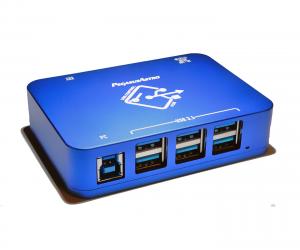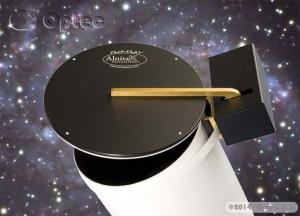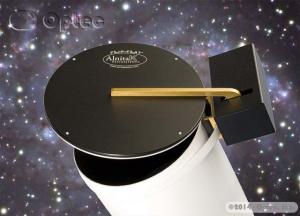- Telescopes
- Overview:
Telescopes - Achromatic Refractor
- Apochromatic Refractor
- Overview:
Apochromatic Refractor - ED Refractor - less color aberration than an achromatic
- SD APO - color free 2-element APO objective
- EDT APO - 3 element ED objective
- High End APO with 3-element APO objective - no color aberation
- Flatfield APO with flat field for Astrophotography
- All Apos and EDs from all manufacturers - large overview
- TS APO and ED from Japan with high quality optics
- Overview:
- Newtonian Telescopes
- Dobsonian Telescopes
- RC Ritchey Chretien Telescopes
- Casssegrain Telescopes
- Reflektor Telescopce with Lens Correcture
- Maksutov Cassegrain Telescopes
- GoTo Telescopes
- Solar Telescopes H-Alpha
- Overview:
- Mounts Tripods Rings Rails Power Supply ...
- Overview:
Mounts Tripods Rings Rails Power Supply ... - Mounts Equatorial with GoTo
- Mounts Equatorial without GoTo
- Mounts Azimutal with GoTo
- Mounts Azimutal without GoTo
- Mounts GoTo - Harmonic Drive
- Travel mounts for astro imaging
- Tripods Piers Polar Wedges
- Mount Control & Electronics
- Dovetail Clamps, Plates and Mount Adapters
- Tube Rings
- Power Supply
- Counterweights Balance Weights
- Mount Accessories - Other
- Overview:
- Telescope Accessories
- Overview:
Telescope Accessories - Eyepieces
- Barlows & Reducer Lenses
- Diagonal Mirrors and Prisms
- Binocular Viewers
- Finder Scopes
- Telescope Collimation and Test
- Cleaning Tools
- Transport and Storage
- Dust protection for Telescopes & Accessories
- Stray Light Protection
- Dewcaps and Heater
- Focusers, Adapters, Motorfocus
- Telescope DIY & Improvement
- Other telescope accessories
- Replacement Parts
- Overview:
- Filters
- Overview:
Filters - Color Filters and Color Filtersets
- Nebular Filters for Visual Observing
- Neutral-Density and Polfilter
- Photo Narrowband Nebular Filters
- Photo Broadband Filters
- Photo Planetary Filters
- Photo R-G-B and IR Cut Filters
- Photo - Filtersets
- Photometric Filters
- Clip Filter for DSLR Cameras
- Filter Wheels and Filterslider
- Solar Filters for white light
- Solarfilter for H-Alpha and Calcium
- Overview:
- Adaptors
- Overview:
Adaptors - Adapter 1,25" and 24,5mm
- Adapter 2"
- Adapter T2 - M42x0.75
- Adapter M48x0,75
- Adapter M54
- Adapter SC
- Adapter M63
- Adapter M68
- Adapter to other Threads
- Adapter Extensions
- Adapter camera bayonet
- Adapter Objective Filterthread
- Adapter Quick Changing , Rotation
- Adapter Eyepiece Projection
- Adapters Tilting
- Overview:
- Astrophotography and Photography
- Overview:
Astrophotography and Photography - Cooled Cameras
- Cameras without Cooling
- Deep-Sky Cameras uncooled
- Set-Offers Camera, Filter, Wheels
- Acessories for Cameras
- Travel mounts for astro imaging
- Imaging Correctors for Telescopes
- Autoguiding Cameras & Sets
- Everything for Guiding
- Focusing aids - Bahtinov mascs
- Flat Field foils and boxes
- Lenses for Cameras
- Piggyback Camera Holder
- Camera Bags, Photocases & more
- Digital Camera and Smartphone Adapter
- Other photo accessories
- Overview:
- Binoculars, Spotting Scopes, Microscopes, Range Finders
- Overview:
Binoculars, Spotting Scopes, Microscopes, Range Finders - Roof Prism Binoculars
- Binoculars with Porro prisms
- Binoculars from 100mm Aperture
- Binoculars with 1,25 inch eyepieces
- TSMX APO Binoculars
- Binoculars for Astronomy
- Binoculars Hiking Bird watching
- Monoculars - Opera Binoculars
- Accessories for Binoculars
- Spotting Scopes
- Range Finders
- Microscopy
- Bags for Phototripods & Binoculars
- Overview:
- Phototripods and Binomounts
- Books, Software
- Overview:
Books, Software - Books for Astronomy Beginners
- Star Charts and Planispheres
- Books about our Solar System
- Observing Tips for Amateurs
- Popular Astronomy Literature
- Teaching material
- Astrophotography books
- Telescopes, Observatories, Construction
- Calendars Yearbooks
- Software, Star Charts
- Books for Microscopers
- Books Nature and Animals
- Nature Photography TimeLapse
- Overview:
- Night Vision, Magnifiers, Weather, Domes & more
- Beginner Astronomy and Gift Ideas
- Second Hand & Special Offers
- New products
Manufacturer: OPTEC
Product number: OP19054
EUR825.00new
EUR 825,00
incl. 19 % VAT (DE)
The VAT indicated refers to that applicable in Germany. After logging in, the VAT amount is adjusted to the applicable VAT of the stored delivery country. Therefore, the final price may vary accordingly.
excl. 6.95 € shipping costs (DE)
more details to the shipping costs ...Please log in to calculate shipping costs to your country.
There are no reviews for this product
- Details..
- Technical data..
- In the box..
- Reviews..
- Manufacturer infos..
- Safety informations..
Optec 19054 - Alnitak Flip-Flat 270+ Flat Field Panel
The flagship product of Alnitak Astrosystems, the Flip-Flat, is a robotic lenscap and flat field illumination source for small to medium size refractors.
The Flip-Flat employs advanced electroluminescent lighting panel technology to provide a uniform source of illumination for the production of high quality flat field frames necessary for serious astroimaging and photometric work. With the Flip-Flat, on-demand flat fields with uniformity errors less than 1% are now possible.
In addition to providing excellent flat fields, the Flip-Flat protects the objective lens of the telescope from dust that typically plagues remote installations where the user cannot manually replace the lenscap after an imaging session.
The Flip-Flat is easily mounted to the front of any telescope tube (or rigid dewshield) with an OTA outside diameter between 6" (150 mm) and 8" (200 mm), but it can be used up to 8-1/8" (206 mm). The Flip-Flat is attached to the telescope OTA with industrial nylon zip straps and easily removable for transport and storage.
New: Optec has partnered with Chris White of Overcast Observatory to re-design the Flip-Flat electroluminescent calibration panel mechanical design. The new Alnitak Flip-Flat 270 design allows a full 270-degree rotation of the flat field panel to rest against the side of the telescope tube.
A simple Windows interface provides the ability to open and close the Flip-Flat and turn on the light source. The intensity of the light can be adjusted to your needs.
The flagship product of Alnitak Astrosystems, the Flip-Flat, is a robotic lenscap and flat field illumination source for small to medium size refractors.
The Flip-Flat employs advanced electroluminescent lighting panel technology to provide a uniform source of illumination for the production of high quality flat field frames necessary for serious astroimaging and photometric work. With the Flip-Flat, on-demand flat fields with uniformity errors less than 1% are now possible.
In addition to providing excellent flat fields, the Flip-Flat protects the objective lens of the telescope from dust that typically plagues remote installations where the user cannot manually replace the lenscap after an imaging session.
The Flip-Flat is easily mounted to the front of any telescope tube (or rigid dewshield) with an OTA outside diameter between 6" (150 mm) and 8" (200 mm), but it can be used up to 8-1/8" (206 mm). The Flip-Flat is attached to the telescope OTA with industrial nylon zip straps and easily removable for transport and storage.
New: Optec has partnered with Chris White of Overcast Observatory to re-design the Flip-Flat electroluminescent calibration panel mechanical design. The new Alnitak Flip-Flat 270 design allows a full 270-degree rotation of the flat field panel to rest against the side of the telescope tube.
A simple Windows interface provides the ability to open and close the Flip-Flat and turn on the light source. The intensity of the light can be adjusted to your needs.
| Diffuser diameter: | 7.7" (195 mm) |
| Lamp/Illumination diameter: | 6.7" (170 mm) |
| Control box dimensions: | 5.3" x 4.2" x 2.7" (135 mm x 107 mm x 69 mm) |
| Pivot arm length: | 6.1" (155 mm) |
| Pivot arm range: | 270 degrees |
| Power requirements: | 5 V DC provided by USB interface |
| Recommended OTA/dewshield diameter: | 6" to 8" (150 to 200 mm) |
| Maximum OTA/dewshield diameter: | 8-1/8" (206 mm) |
| Weight: | 1 lb. 6 oz. (0.6 kg) |
How do I get a good flat field image?
A good flat compensates for edge shading (vignetting), but also for darkening caused by dust on the filter, sensor or corrector. The background becomes even, the contrast can be raised further to make finer details visible in faint nebulae. The following basic settings should be noted:How do I find the right exposure time with the shooting software, for example Maxim DL?
The ADU value (Analog Digital Units) helps here. Every capture program shows this value when you move the mouse over the image. In the center of the image, where the illumination is highest, the ADU value is highest. The longer you expose, the higher this value becomes. If the ADU value is higher than the maximum value of the camera, the image is overexposed. A camera with 16 bits has a max. ADU value of 65536, one with 14 bits has 16384, one with 12 bits only 4096.
The exposure time of the flat should be so short that in the middle of the flat the ADU value is at most 50% of the maximum value of the camera. Then the flat looks well exposed. We recommend to take at least 10 flats per exposure and to process them to a "master flat".
If the flatfield box is too bright, that means it always produces overexposed images, then a white paper, which is fixed in the flatfield box, helps. This will dim the light and allow for slightly longer exposure times.
| Manufacturer / Importeur: | Teleskop-Service Ransburg GmbH |
| Street: | Von-Myra-Str. 8 |
| ZIP / City: | 85599 Parsdorf |
| Country: | Germany |
| Telefon number: | +49 89 99228750 |
| Email: | info@teleskop-service.de |
| Website: | www.teleskop-service.de |
Safety informations: PDF Download
Recommended accessories
General Accessories
Similar Products
Reviews











